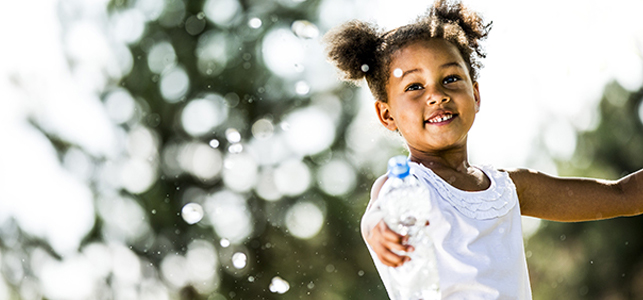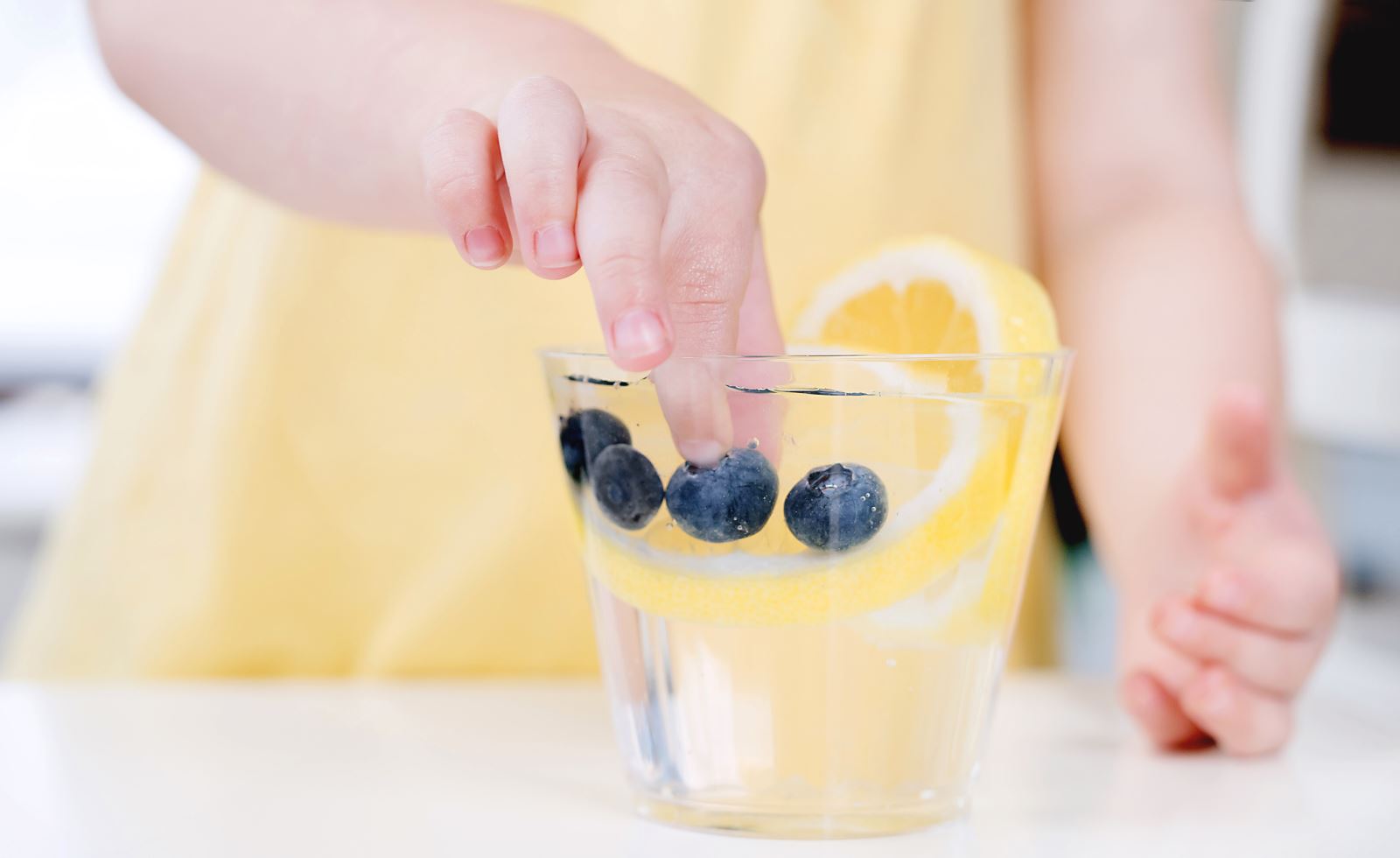
Is your child staying hydrated enough?
Making sure your child is adequately hydrated, or taking in enough fluid, is always important because it keeps them functioning and feeling their best.
Adequate hydration also promotes regular bowel movements, which is something that’s very important for stomach and gut health.
Try keeping a log of everything your child drinks, and how much they drink, for an entire day. At the end of the day, add up the amount your child consumed and compare the total to the chart below. If they’re consuming less than what’s listed for their age, they’re probably not taking in enough fluid to stay hydrated.
General fluid intake guidelines for kids
|
Age |
Daily fluid needs |
|
Toddler (1-3 years) |
4-6 cups |
|
School-age child (4-11 years) |
6-8 cups |
|
Adolescent (12+ years) |
8-10 cups |
What should my child be drinking?
Infants meet their fluid needs by drinking breast milk and/or formula. After a year of age, water is the best beverage to keep a child hydrated. Dietary guidelines also recommend children ages 12-24 months incorporate whole milk into their diet because it helps with brain development. Once they turn two, it’s typically recommended that they switch to low-fat milk to help meet their fluid needs.
Many popular beverages, such as sodas, sports drinks, juices and punches, are high in added sugar. These added sugars provide a lot of calories and can lead to weight gain. It’s important to choose beverages that are low in added sugar so your child can stay hydrated while staying healthy. Check out the “soda swaps” section below for some healthy ideas to keep fluids fun!
Note: You may be wondering about 100% fruit juice. One-hundred percent fruit juice doesn’t have added sugar, but it contains natural sugar and lacks the fiber that a whole piece of fruit contains. Without the fiber, the natural sugar is digested very quickly and can cause a spike in blood sugar. Because of this, whole fruit is preferred over 100% fruit juice. We recommend avoiding 100% fruit juice altogether or limiting it to 4-6 ounces daily in a child’s diet.
Help – my child is not drinking enough fluid!
It may be a challenge to get your child to drink the amount of fluid their body requires to function its best AND to have them choose healthy options too, but with some fresh ideas for healthy beverages it doesn’t have to be!
The following creative beverage suggestions can help make healthy drinks to keep hydrated more exciting.
- Getting your child involved in preparing their drinks, such as choosing which fruit(s) to flavor them with, can get them more excited about what they’re drinking and increase the likelihood that they’ll want to drink it.
- Try presenting your child with two or three healthy beverages, such as plain water, flavored water or milk, and allow them to choose one. By giving them a choice, you’re putting them in control of what they get to drink and this can encourage them to drink more.
- Create your own soda swaps with some fresh ideas for H20! Give the following low-sugar beverages a try as healthy alternatives:
 Homemade flavored water - Chop up favorite fruits, vegetables and herbs and put them in the bottom of a water bottle. Fill the bottle with water, let it sit overnight in the fridge, and in the morning you’ll have homemade flavored water! Flavoring ideas:
Homemade flavored water - Chop up favorite fruits, vegetables and herbs and put them in the bottom of a water bottle. Fill the bottle with water, let it sit overnight in the fridge, and in the morning you’ll have homemade flavored water! Flavoring ideas:
-Cucumber + mint + watermelon
-Strawberry + kiwi
-Lemon + lime
Or let your child come up with their own creation!
Citrus twist - Squeeze a lemon or orange wedge (approximately ¼ of a full-size fruit) into a glass of water for a tangy twist!
Diluted fruit juice - Add 1-2 tablespoons of any fruit juice to 8 ounces of water for a splash of flavor.
Fun fact! Did you know foods contain fluid too?
Many fruits and vegetables contain a lot of water. Cucumbers, celery, strawberries, blueberries, tomatoes, lettuce, watermelon and zucchini are all great foods to eat to improve hydration.
What if my child is active? Should they be drinking sports drinks?
The chart above reflects general fluid intake guidelines for children. When kids play hard and sweat, they are losing water so it’s important to give them extra fluid to keep them hydrated!
Most children’s sport practices and games are not physically strenuous enough to require a child to drink a sugar-laden and electrolyte-containing sports drink. Instead, water should be offered before, during and after the activity. Our article on summer safety highlights recommended amounts for children and teens. You can let your child pick out a special water bottle, or even buy them a clear plastic one and let them decorate it with stickers and markers. Having a water bottle that is exciting to them can help remind and encourage them to drink what’s inside!
By Anna Feld, registered dietitian nutritionist
